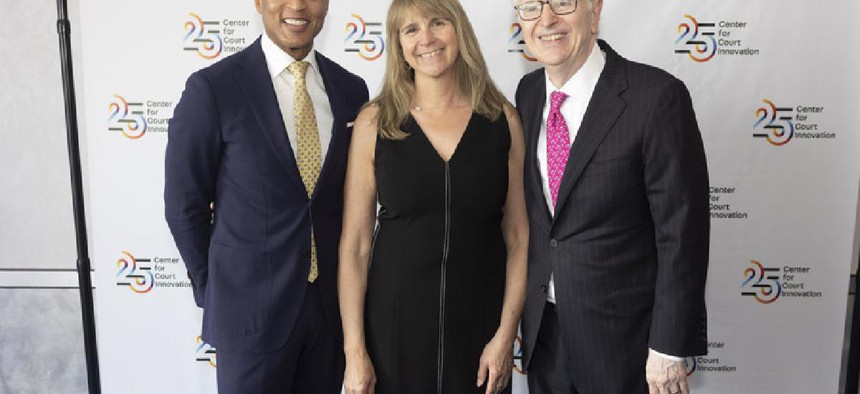Center for Court Innovation celebrates 25 years of transforming justice in New York City
The organization's annual benefit honored four leaders in criminal justice reform

Michael Falco/Center for Court Innovation
The Center for Court Innovation, a nonprofit organization dedicated to finding solutions for a fair justice system and reducing incarceration in New York City, celebrated its 25th anniversary at its annual benefit Tuesday at Manhattan’s Pier 59.
This year, the organization honored four justice reform leaders: Former Chief Judge Jonathan Lippman received the lifetime achievement award; artist Shaun Leonardo received the community innovator award; JPMorgan Chase & Co. received the corporate innovator award and the Tow Foundation received the philanthropic innovator award. Recipients of this year’s awards were recognized for their contributions in making strong and resilient communities while ensuring the justice system remains fair and equitable.
“We have more people behind bars than any other nation—over two million – plus millions more under some form of justice-system supervision. But it doesn’t have to be like that,” Don Lemon, the CNN anchor and journalist who served as emcee said. “We know that because, among other things, the Center has spent years helping reduce the jail population while, at the same time, helping lower crime and making communities safer. They have shown without a doubt that providing services, bringing resources into neighborhoods, and investing in people and communities works far better than sending everyone to jail or prison.”
Gov. Kathy Hochul, New York City Mayor Eric Adams, U.S. Sen. Charles Schumer and Jamie Dimon, chairman and CEO of JPMorgan Chase, delivered video messages that were played during the benefit.
Using the power of research, the Center for Court Innovation has worked to respond to the increasing population in jails, such as Rikers Island, and provided data-driven strategies to balance public safety and jail size reductions.
During his speech, Lippman reflected on his work helping to propel the center’s work forward.
“We called it the ultimate criminal justice think tank,” he said. "We created a place that really has been a part and parcel of the New York Miracle, that has been able to reduce crime and incarceration at the same time. The center proved that we could move justice closer to the community and that decarceration and public safety were compatible in every way. The center is a place that uniquely understands that there cannot be two systems of justice, one for the majority and people with resources and means, and another for Black and Brown people, poor people and people with modest means.”
NEXT STORY: Debating the impacts of bail reform
